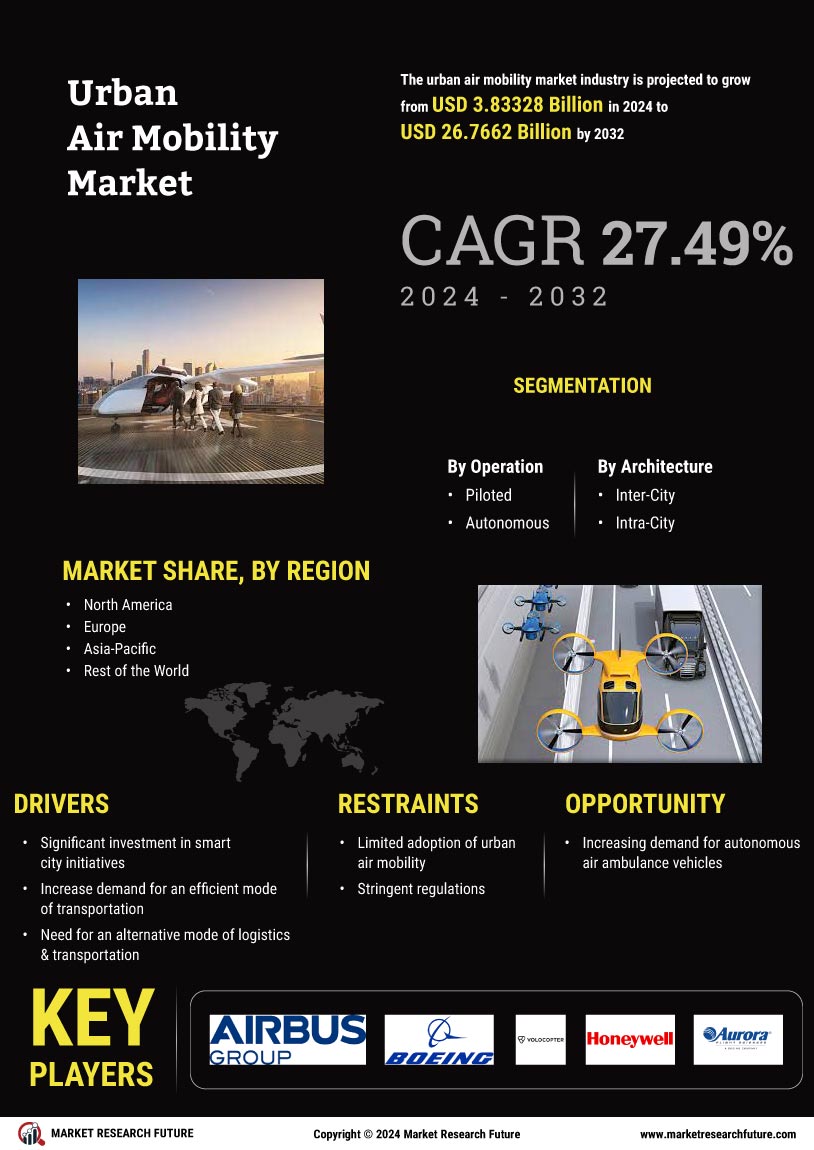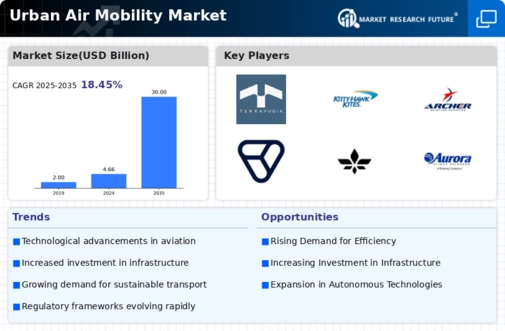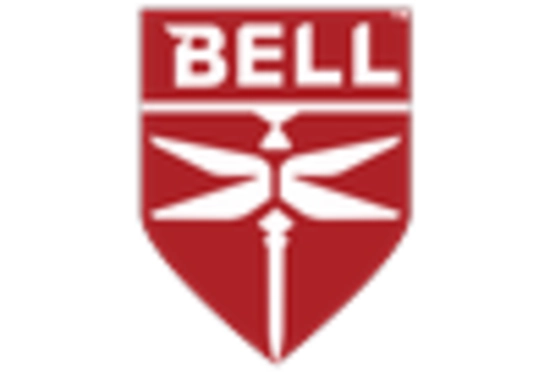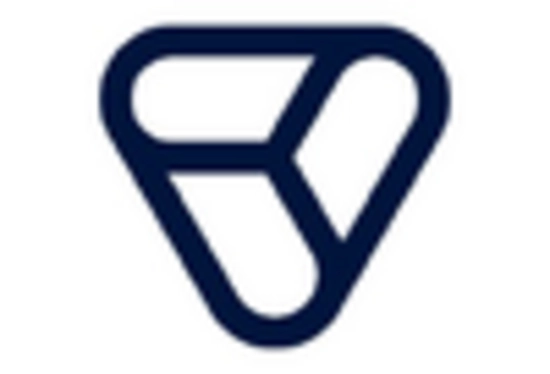Regulatory Frameworks
The establishment of supportive regulatory frameworks is essential for the Urban Air Mobility Market to thrive. Governments and aviation authorities are actively working to create guidelines that ensure the safe integration of aerial vehicles into existing airspace. These regulations encompass various aspects, including air traffic management, safety standards, and operational protocols. As regulatory bodies develop comprehensive frameworks, they provide a clearer pathway for companies to enter the Urban Air Mobility Industry. This regulatory clarity is crucial for fostering public trust and encouraging investment in urban air mobility solutions. Moreover, collaboration between industry stakeholders and regulators is likely to enhance the overall safety and efficiency of urban air mobility operations, further solidifying the market's potential.
Environmental Concerns
Growing environmental concerns are increasingly influencing the Urban Air Mobility Market. As urban areas grapple with air pollution and greenhouse gas emissions, there is a pressing need for sustainable transportation solutions. Urban air mobility, particularly through the use of electric aircraft, presents an opportunity to reduce the carbon footprint associated with traditional ground transportation. The shift towards greener technologies aligns with global sustainability goals, potentially leading to regulatory incentives for the Urban Air Mobility Industry. Furthermore, studies suggest that eVTOL aircraft could reduce noise pollution significantly compared to conventional helicopters, making them more acceptable in urban environments. This alignment with environmental objectives positions the Urban Air Mobility Industry favorably in the eyes of both consumers and policymakers.
Increased Urbanization
The rapid pace of urbanization is a key driver for the Urban Air Mobility Market. As cities expand and populations grow, traditional ground transportation systems face congestion and inefficiencies. Urban air mobility solutions, such as air taxis and drones, offer a potential alternative to alleviate traffic woes. According to recent estimates, urban populations are projected to reach 68% by 2050, intensifying the need for innovative transportation solutions. This demographic shift creates a fertile ground for the Urban Air Mobility Industry to flourish, as urban dwellers seek faster, more efficient means of travel. The integration of aerial vehicles into urban landscapes could redefine commuting, making it a viable option for daily transportation needs.
Investment and Funding
The Urban Air Mobility Market is witnessing a surge in investment and funding, which serves as a crucial driver for its growth. Venture capitalists, government agencies, and private investors are increasingly channeling resources into the development of urban air mobility technologies. Reports indicate that investments in the sector have reached billions of dollars, reflecting a strong belief in the potential of aerial transportation. This influx of capital not only accelerates research and development but also fosters collaboration among stakeholders, including aerospace manufacturers, technology firms, and regulatory bodies. As funding continues to flow into the Urban Air Mobility Industry, it is likely to catalyze innovation and expedite the commercialization of urban air mobility solutions, paving the way for a new era of transportation.
Technological Innovations
Technological advancements play a pivotal role in shaping the Urban Air Mobility Market. Innovations in electric vertical takeoff and landing (eVTOL) aircraft, autonomous navigation systems, and battery technology are driving the development of urban air mobility solutions. For instance, advancements in battery efficiency have the potential to extend flight ranges and reduce operational costs, making air mobility more accessible. The market for eVTOL aircraft is expected to grow significantly, with projections indicating a value of over 1 trillion USD by 2040. These technological breakthroughs not only enhance the feasibility of urban air mobility but also contribute to the overall safety and reliability of aerial transportation, thereby attracting investment and interest in the Urban Air Mobility Industry.


















Leave a Comment